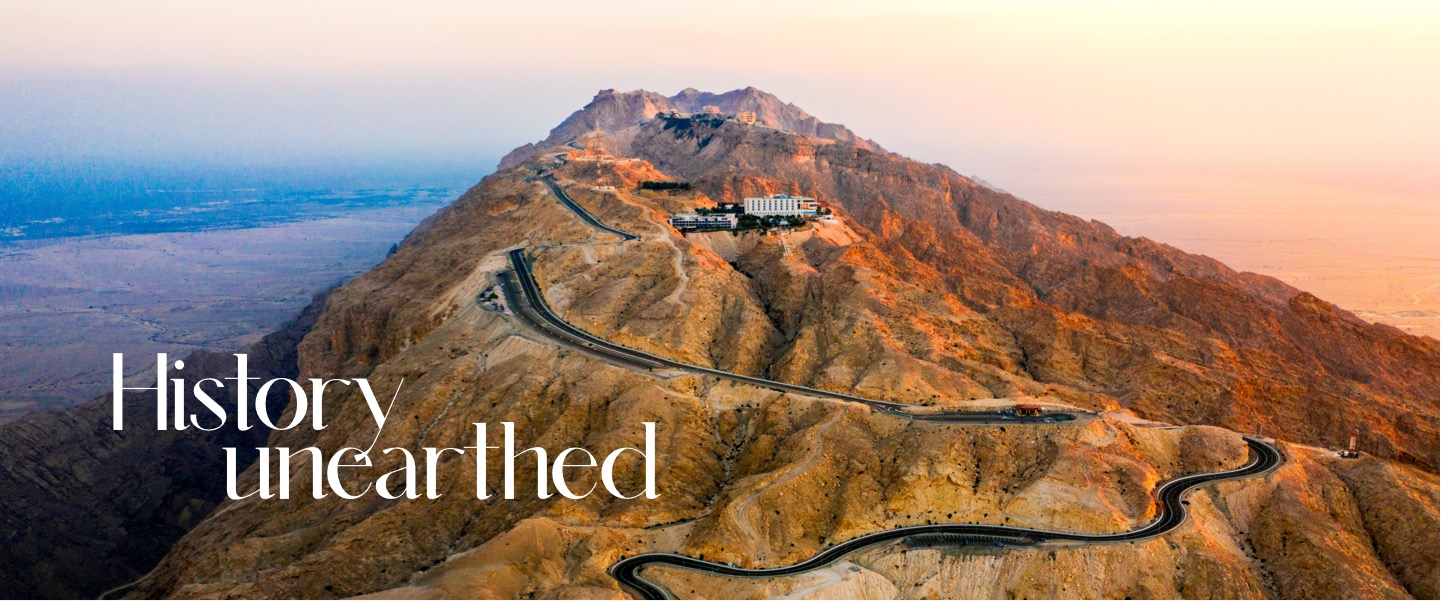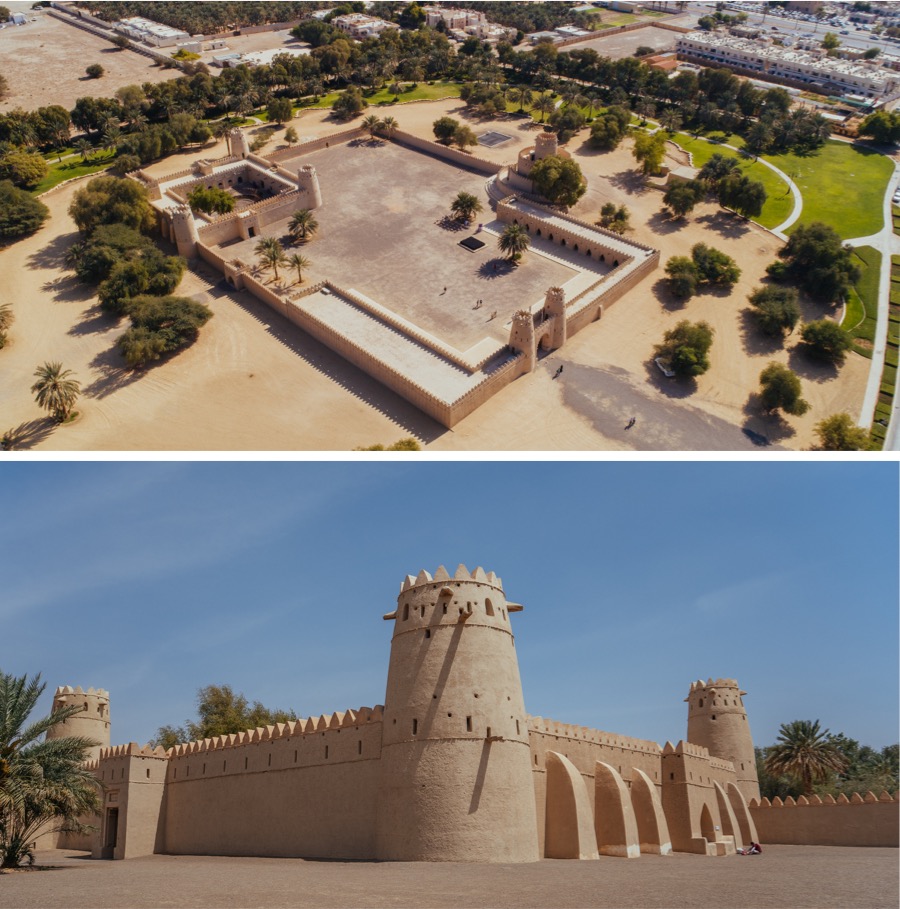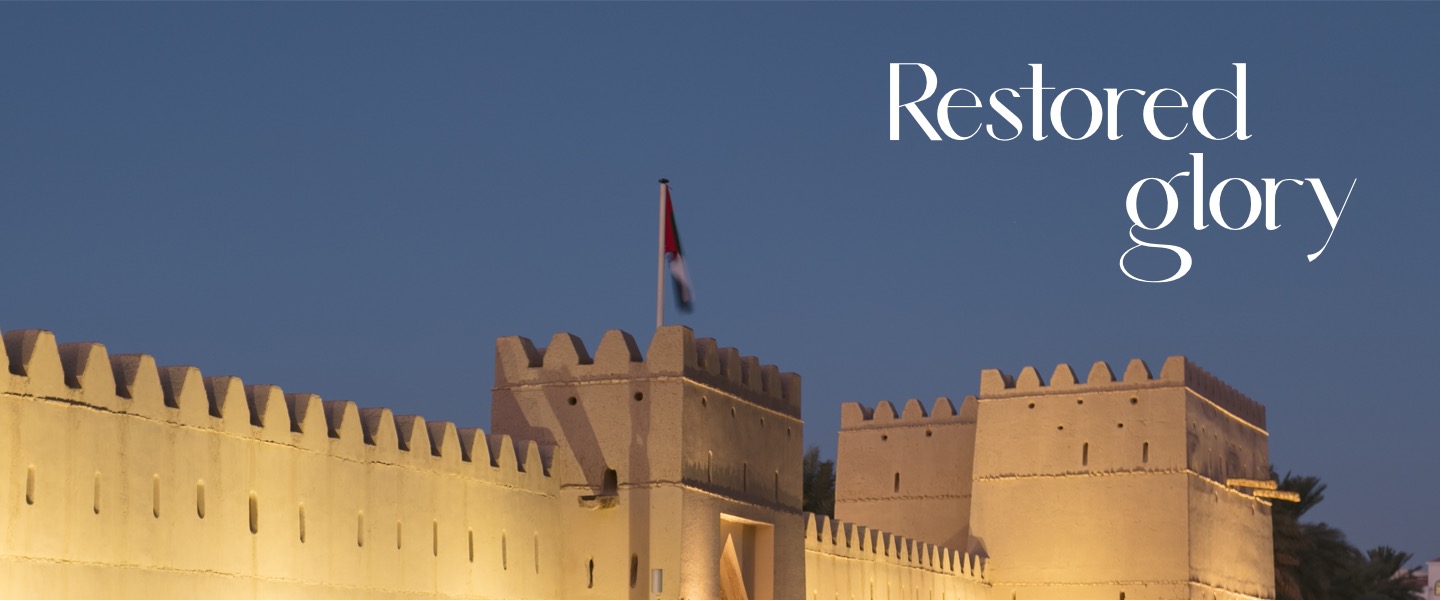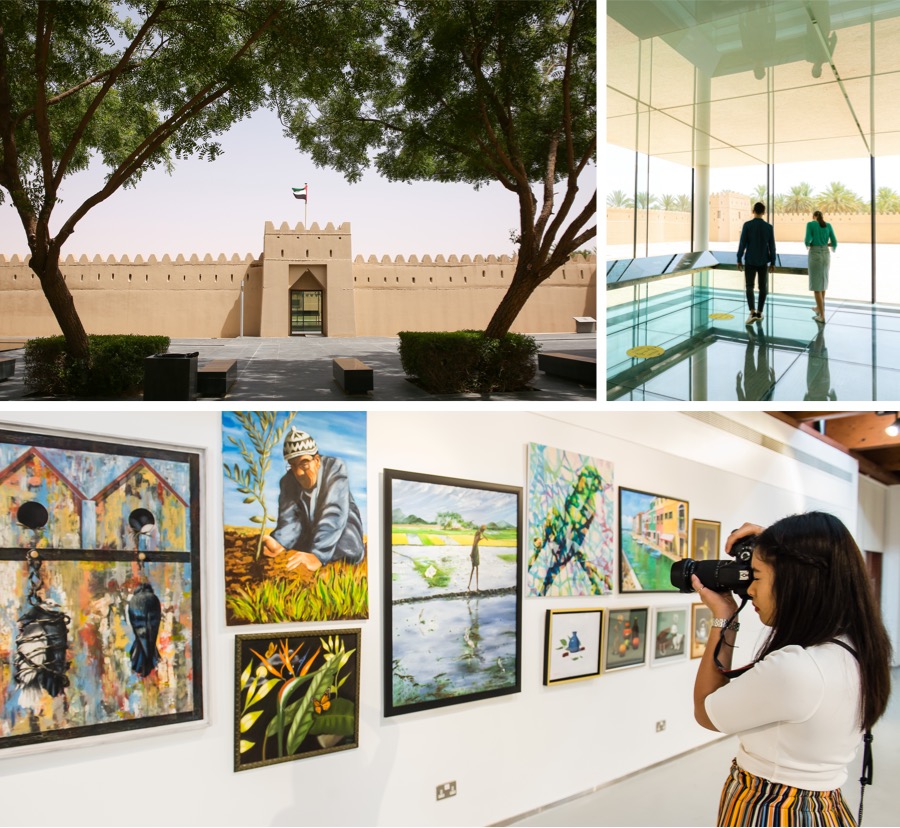Abu Dhabi’s Dazzling Cultural Gems
Sponsored Content From

For many business travelers, the typical image of Abu Dhabi—the modern capital of the United Arab Emirates—is the city’s shimmering skyline of futuristic skyscrapers such as Capital Gate and Etihad Towers.
Fewer visitors are familiar with Al Ain—the unique “Garden City” in the Eastern Region of the Emirate of Abu Dhabi—a UNESCO World Heritage Site that has been inhabited for thousands of years and boasts numerous historic treasures including desert forts, ancient tombs and the mud-brick foundations of a millennium-old mosque. In Arabic, Al Ain means “the spring,” referring to the cluster of six oases in this lush city of abundant parks and leafy boulevards. Beneath its surface, archaeologists have discovered a network of underground water channels (“aflaj”) dating back to the Iron Age, which are still used today to supply water from the mountains to irrigate nearby farms.

"The UAE has been all about modernity and business, but also, behind all of that, it has an incredibly rich archaeological history and traditional knowledge,” says British-born archaeologist Peter Sheehan, the Historic Buildings Manager at the Department of Culture and Tourism - Abu Dhabi.
Al Ain is situated around 100 miles east of Abu Dhabi city—close to the Empty Quarter desert and the border with Oman—and is easily accessible from the capital by bus.
For Sheehan, a visit to this ancient city is essential for those interested in learning about the country’s heritage, and he suggests that the experience might challenge some stereotypical notions of the UAE.

“Al Ain is all about water. It has been continually settled for 5,000 years—and I think a lot of that is very different than many people’s perceptions of Abu Dhabi.”
— Peter Sheehan, Historic Buildings Manager at the Department of Culture and Tourism - Abu Dhabi

Sheikh Zayed bin Sultan Al Nahyan, founding father of the UAE, grew up in Al Ain, and as the UAE’s first president, he arranged the excavation of the region’s past. In 1959, he employed a team of archaeologists that discovered hundreds of 5,000-year-old beehive-shaped tombs near Jebel Hafit, the majestic mountain that overlooks Al Ain. Ceramic and copper artefacts found in these burial chambers revealed early trade links between the region and the people of Mesopotamia and the Indus Valley.
In 1946, Sheikh Zayed ordered the restoration of the aflaj irrigation system that harnesses gravity to bring water from underground sources through tunnels to the flatlands. This ancient agricultural innovation has shaped farming in the modern world.
Jebel Hafit is so spectacular that Sheehan insists a trip to “the magic mountain of Al Ain” should be part of every visitor’s itinerary. “It’s amazing—it towers over Al Ain,” he says. “It’s over 1,000 meters high and beautifully cool in the summer.”

A striking feature of Al Ain is the remarkable network of forts that was established in the shape of a bow to shield the oases from attacks from the south. “The more monumental part of culture here is the historic buildings, which surround each of the oases,” says Sheehan. “You have a number of historic forts, built from the end of the 19th century onward, and all of these locations and routes into Al Ain are marked by these forts.”
Al Jahili Fort is a fine example. Built in 1898 to protect the palm farmers of the region, the walls of the rectangular fort are eight meters (26 feet) high, with openings for rifle fire. Spectacular watchtowers 14 meters (46 feet) high look out over the desert.
The forts of Al Ain have served many purposes: as well as defending the area and providing a refuge for local people during times of danger, they have been used as trading posts, summer resorts and bases for administration and the management of local agriculture.

Sheehan also recommends a visit to Qasr Al Muwaiji, a fort and palace built under the rule of Sheikh Zayed bin Khalifa (Zayed the First) at the end of the 19th century. With a grand entrance gate, the fort was later used by Sheikh Zayed bin Sultan Al Nahyan as his seat of governance and family home. His eldest son, His Highness Sheikh Khalifa bin Zayed Al Nahyan, current President of the UAE, was born in the palace in 1948. The building has undergone extensive restoration, and an exhibition detailing the palace’s deep connection with Abu Dhabi’s ruling family is housed in a glass-walled space within the courtyard.
A visit to Al Qattara Arts Centre, a leading venue for Al Ain’s cultural and artistic scene, is similarly rewarding. “It’s a rebuilt historic building, and during the construction, we found five meters of archaeological site underneath,” explains Sheehan; these uncovered layers show Al Ain’s past, from the Late Islamic period to the Iron Age. A permanent exhibition of important finds, including an Iron Age ceramic lion figurine, has been incorporated into the venue as its “archaeological basement,” and the site “is now one of the highlights” of the arts facility, he says.

Al Ain continues to bring forth the hidden story of its history. In 2018, during construction of the Sheikh Khalifa bin Zayed Al Nahyan Mosque, which opened in 2021, the mud-brick remains of a 1,000-year-old structure were uncovered. Archaeologists have determined that these are the foundations of an ancient mosque—the UAE’s oldest—built at the height of Islam’s Golden Age. This finding has dispelled any lingering belief in the myth that this region was an arid wilderness before the arrival of Western powers in the 16th century.
For Sheehan, helping to uncover Al Ain’s rich past and make it more widely known has been a fulfilling task. “One of the most exciting things about our job is to discover Abu Dhabi’s history and to present it to people, to protect and safeguard their heritage.”